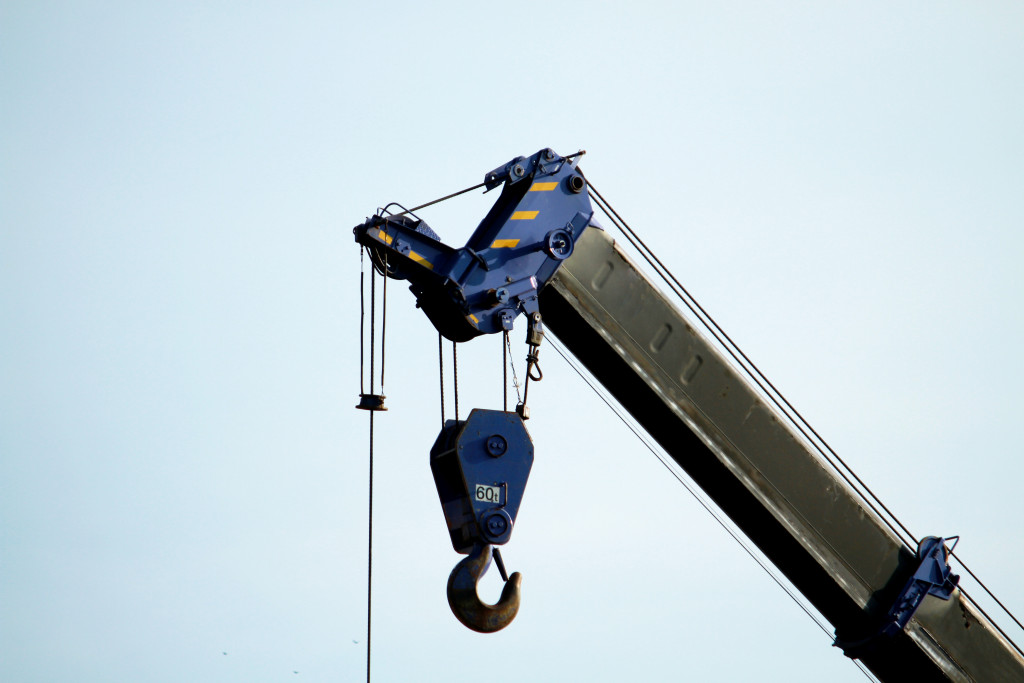- Proper training of crane operators is crucial for understanding crane mechanisms, adhering to safety protocols, and improving operational efficiency.
- Overload prevention, through understanding the load chart and using technology, is essential for reducing equipment strain and preventing accidents.
- Clear communication among all site workers and modern technology can enhance safety and productivity in construction sites.
- Vigilance in weather assessment and having a robust emergency plan are integral parts of crane operation to ensure safety and efficiency.
Running a construction business involves numerous challenges, and operating cranes safely and efficiently is one of them. As you navigate this complex task, remember that understanding the basics of crane operation and adhering to safety protocols can make a significant difference. Delve into some essential tips that could help elevate your crane operation game, potentially improving your project timelines and overall business productivity.
Regular Maintenance
One of the most critical components of optimal crane operation is regular maintenance, which includes hiring crane inspection services. These services thoroughly assess your equipment, ensure all parts work correctly, and identify potential issues before they escalate into costly repairs or dangerous accidents.
Crane inspection services employ professionals trained to detect the smallest signs of wear and tear that an untrained eye may overlook. This proactive approach extends the lifespan of your cranes and enhances the safety of your construction site, reducing the risk of workplace injuries.
Ultimately, investing in professional crane inspection services can lead to significant savings in terms of time, money, and resources, thereby contributing to the overall success of your construction business.
Crane Operation Necessities
Understanding and implementing crane operation necessities is equivalent to efficient project execution and maintaining a safe work environment in the construction industry. Here are some tips:
Operator Training

Proper training of crane operators is fundamental to the safe and effective operation of cranes in any construction business. A well-trained operator is well-versed in the technical aspects of the crane, can swiftly react to unexpected situations, and understands the critical role of safety in crane operations.
Training should encompass theoretical learning and hands-on experience, ensuring operators comprehensively understand crane mechanisms, safety protocols, operation controls, and emergency procedures. It also has to be ongoing; as technology evolves and new types of cranes are introduced, operators need to receive updated training to stay current.
Investing in continuous operator training is non-negotiable. It demonstrates a commitment to safety, boosts operational efficiency, reduces downtime caused by operator errors, and ultimately contributes to the company’s bottom line. Overall, operator training is a cornerstone of successful crane operation in the construction industry.
Overload Prevention
Preventing overload is another fundamental aspect of safe and efficient crane operation. Overloading a crane puts enormous strain on the equipment, potentially causing severe damage, and presenting a significant safety risk that could lead to catastrophic accidents. A solid understanding of the crane’s load chart is essential for preventing overload.
The load chart provides information on the crane’s capacity at various boom angles and lengths. Operators must be trained to interpret and apply this chart accurately. Furthermore, using modern technology like load moment indicators, which provide real-time information about the load being lifted, can prevent overload.
Regularly evaluating and adhering to proper loading practices can significantly reduce the risk of accidents, improve equipment longevity, and enhance operational efficiency in the construction industry.
Clear Communication
Clear communication is an essential part of safe and efficient crane operation. The necessity of clear, concise, and consistent communication cannot be overemphasized in a high-stakes environment such as a construction site. This involves interaction between the crane operator, the ground crew, and all site workers.
Using universally accepted hand signals, radios, and new technologies like wireless headsets can greatly improve on-site communication. Furthermore, pre-job briefings can ensure everyone is on the same page regarding the day’s tasks and potential challenges.
Regular safety meetings can also serve as platforms to clarify misunderstandings and address concerns. In essence, clear communication can help prevent misunderstandings that could lead to accidents, increase productivity, and foster a team-oriented environment on the construction site.
Weather Assessment

Being vigilant about weather conditions is integral to operating cranes safely and efficiently. Adverse weather conditions, such as high winds, heavy rain, snow, or fog, can significantly impact crane operations, posing potential safety risks and operational challenges. High winds, for instance, can cause the crane to sway or the load to become unstable.
At the same time, poor visibility due to fog or heavy rain can hamper the operator’s view, increasing the likelihood of accidents. Therefore, monitoring weather forecasts closely and adjusting crane operations accordingly is crucial. Modern weather-tracking technology can provide real-time updates and alerts to aid in making informed decisions.
If extreme weather conditions are predicted, it might be necessary to suspend crane operations until conditions improve. Prioritizing weather assessment underscores a commitment to safety, helps prevent weather-related incidents, and ensures that crane operations run as smoothly and efficiently as possible.
Emergency Plan
A robust emergency plan is a pivotal aspect of crane operation safety. No matter how diligent a construction business may be, unforeseen situations could arise, necessitating quick and effective responses. An effective emergency plan provides a structured procedure that employees can follow in these instances, which can minimize potential damage and ensure the safety of all staff.
This should include immediate steps to be taken during emergencies, evacuation procedures, and emergency contact numbers. Regular drills and training should accompany this plan to ensure all site workers are familiar with the procedures.
Furthermore, the plan should be regularly reviewed and updated to accommodate changes in the worksite or operations. By preparing for the unexpected, a construction business can mitigate risks and ensure that all workers understand their roles and responsibilities during emergencies, ultimately ensuring a safer and more secure work environment.
In conclusion, running a construction business necessitates vigilance in crane operation. You can ensure a safer and more efficient workplace by investing in regular maintenance, operator training, overload prevention, clear communication, weather assessment, and comprehensive emergency planning. Remember, safety and efficiency are within your control. Act today for a better tomorrow in your construction industry journey.
